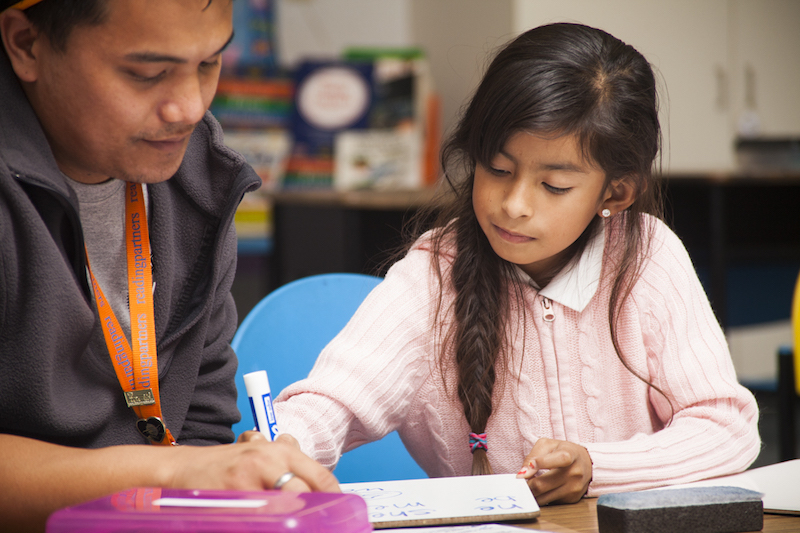Children’s Health and UT Southwestern Break Ground on New Dallas Pediatric Campus; Announce $100 Million Donation from…
READING IS THE KEY TO THRIVING (NATIONAL READING MONTH)
By Sara Meyers, Communications Specialist
I remember when I was in 3rd grade and was asked to be the narrator of my Thanksgiving school play. A friend of mine had wanted the part but I was selected because I had somehow excelled further in class reading goals than she had and I had a deeper speaking voice (yes, even at 10 years old), that just automatically made me a little louder. I remember how proud I was to have my parents in the audience and all my friends listening as I told this sweet Thanksgiving story, while the rest of my classmates acted out their parts in the play.
It’s interesting to think on this time in my life as a third grader because it became increasingly evident when friends of mine started struggling more in school that it was due to reading challenges. Research tells us that “if children cannot read proficiently by the end of third grade, they face daunting hurdles to success in school and beyond… struggling readers rarely catch up with their peers academically and are four times more likely to drop out of high school.” [i] This is why interventions are critical if we want to see our children thrive beyond academics and into adulthood. In my personal journey, I was a very shy child and yet, because of excellent teachers who walked with me through phonics lessons and other reading strategies, I began to cultivate a love of reading and telling stories! They helped instill in me a confidence that I would never have developed had it not been for their encouragement and guidance.
My dad is an avid reader and was faithful to make us turn off the tv shows and open books. He’d even make us read paragraphs of Bible lessons he was reading not only to teach us spiritual truths, but to help us sound out deep theological words (who needs to spell “infallibility” at age 9?) Another family member of mine, who has just discovered a love for reading in the past few years, grew up challenged with undiagnosed dyslexia and struggled to read as a child. In public schools at the time, there were no interventions for her. This led to her shyness and fear of speaking up in class because reading out loud was a nightmare for her. I think a lot about her when I meet children today who feel intimidated at the thought of reading—she has overcome so much to be a reader today and it gives me hope for children now who can have access to help needed for improvement in their reading abilities.
March is National Reading Month—a month established to shine a light on the impact of reading and help children get excited at the activity. This March, The Rees-Jones Foundation celebrates the work of its partners who are ensuring that all children have the opportunity to read well and find success academically and personally. We are grateful for the work of: Beacon Hill, Catch Up & Read, Readers 2 Leaders, and Reading Partners. These partners are changing the game when it comes to reading interventions.
Reading is foundational for children’s learning. If you have trouble reading, science and math will not make any sense. If you cannot read, it is very frustrating to try to read about any form of history because of its emphasis on words to tell the story of our state or nation. Many children have the odds stacked against them. For example, growing up in poverty is one of the main indicators for a student’s inability to learn to read. A child growing up in poverty usually has a lack of readiness for school, lack of tutoring opportunities, parents with lower educational attainment which can mean lack of reading at home, and lack of investment into their child’s academics. [ii] Who will stand in the gap for these children who have a desire to learn but have so many factors that could hinder their learning journey?
Nonprofits like Reading Partners are filling that gap. Reading Partners specializes in strategies aimed at working closely with students to aid them in overcoming challenges to reading. Through school partnerships, Reading Partners enrolls students and gives them an assessment to start the process. Staff design individualized reading plans for each student and then work with them throughout the year using tools and strategies to support the child’s improvement. Excitingly, during the 2022-23 school year, 85% of Reading Partners students met or exceeded their individualized end-of-year literacy goals.
 Another one of our grantees, Catch Up & Read, works with students and teachers in 18 schools throughout Dallas ISD. The agency provides literacy instruction training to teachers so they can impact the students who are struggling the most in reading. Each participating school has a cohort of 7 teachers that receive professional development in literacy instruction for an entire school year. To empower students who are behind in reading, teachers identify students who need additional support and refer to Catch Up & Read. Instruction includes small group lessons on phonics, reading comprehension, building vocabulary, as well as hearing, using, and understanding words. Instruction is delivered by the teachers who are participating in the Catch Up & Read literacy training. This dual strategy proves to be very effective. On average, in just one month 86% of students make gains in improving their reading level.
Another one of our grantees, Catch Up & Read, works with students and teachers in 18 schools throughout Dallas ISD. The agency provides literacy instruction training to teachers so they can impact the students who are struggling the most in reading. Each participating school has a cohort of 7 teachers that receive professional development in literacy instruction for an entire school year. To empower students who are behind in reading, teachers identify students who need additional support and refer to Catch Up & Read. Instruction includes small group lessons on phonics, reading comprehension, building vocabulary, as well as hearing, using, and understanding words. Instruction is delivered by the teachers who are participating in the Catch Up & Read literacy training. This dual strategy proves to be very effective. On average, in just one month 86% of students make gains in improving their reading level.
Reading is the key to thriving. If we are going to see children in our communities flourish, we believe that investing in partners across North Texas who specialize in strong reading programs is essential. I saw this in my own story as multiple teachers and my parents invested in me to help me overcome shyness and fear that hindered my learning. Today, I get to work with words full-time in a communications role with The Rees-Jones Foundation and I consider it an honor to tell stories everyday of life change in children and families. Learning how to read was foundational for my future and is key for children to succeed in every season of life.
Share this post:
Category: Original ContentUncategorized
Collaboration Fuels Innovation By Sara Meyers, Communications Specialist In the philanthropy space, one of the values we…
Veterinary Services That Change Communities By Lynn Gibson, Senior Program Officer On August 30th, while most of…

